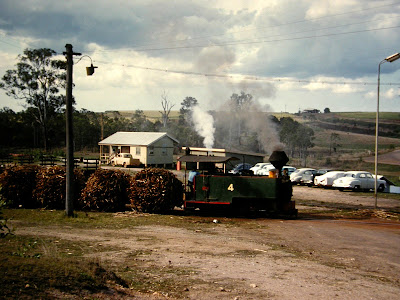
The Sugar Boom and the Evolution of Bundaberg
Posted by on
While early settlers in Bundaberg initially exploited timber resources and cultivated maize, the Sugar and Coffee Regulations of 1864 incentivized a significant shift toward sugar production in the region starting in the 1870s. The first experimental cultivation of sugar cane occurred in 1870 at John Charlton Thompson's Rubyanna property. Just two years later, Richard Elliot Palmer established the first sugar mill at his Millbank plantation, marking the beginning of Bundaberg's transformation into a crucial sugar production area. The construction of the Millaquin Sugar Refinery in 1882 by Robert Cran and his sons solidified this status, while the Fairymead sugar processing plant, owned by the Young Brothers, opened in 1884, further boosting Bundaberg's sugar output.
The sugar industry heavily relied on South Sea Islander labor for its first 35 years. These workers were often subjected to blackbirding—essentially kidnapping—and faced conditions akin to slavery. The first substantial group of Kanaka laborers arrived on the Burnett River in January 1872 aboard the Petrel, with allegations of violence and coercion arising from their recruitment. Plantation owners acquired recruiting ships to secure labor directly from the Solomon Islands and the New Hebrides, often resorting to violent means. For instance, the crew of the Helena was involved in a skirmish while forcibly taking Islanders from Ambrym.
These laborers were bound to work for three years, receiving their payment only at the end of their term. Instead of cash, they were typically compensated with substandard goods, leading to rampant exploitation. Overwork, poor living conditions, inadequate food, contaminated water supplies, and a lack of medical care resulted in high mortality rates among the workers. Despite this, penalties for plantation owners responsible for such neglect were minimal, often capped at a mere £10 fine. The practice of importing South Sea Islander labor was rendered illegal in 1904, with enforced repatriation of these workers occurring between 1906 and 1908.
The 1911 Queensland sugar strike emerged as the South Sea Islander labor force was phased out. Workers protested against plantation owners' alleged replacement of black indentured laborers with white workers. Striking for better wages, accommodations, and working conditions—including an eight-hour day and a minimum wage of 30 shillings—the strike mobilized unionists across the state. Lasting over seven weeks in Bundaberg, where the economy heavily depended on sugar production, the strike led to a Commonwealth Royal Commission into the sugar industry from 1911 to 1912. Initiated by Bundaberg AWA organizer Harry Hall, the commission ultimately upheld the workers' demands, marking a significant victory for organized labor in Queensland and Australia.
Further Developments
The establishment of St Joseph's School in June 1876 marked a critical milestone in Bundaberg’s social infrastructure. Following the Local Authorities Act of 1902, the Barolin Division became the Shire of Barolin, and the Borough of Bundaberg was officially proclaimed the Town of Bundaberg on March 31, 1903. On November 22, 1913, Bundaberg was elevated to city status.
Pioneering aviator Bert Hinkler made significant contributions to Bundaberg’s legacy, notably flying his self-built glider at Mon Repos Beach in 1912. He achieved a remarkable non-stop flight from London to Turin in 1920 and, in 1921, completed a record-breaking flight from Sydney to Bundaberg in just 8.5 hours, surpassing a telegram he had sent to notify his mother of his arrival.
In 1921, the Bundaberg War Memorial was unveiled to honor those who perished in the Anglo-Boer War and World War I. Constructed of Italian marble, the memorial became a significant regional tribute at a cost of £1,650, ranking among the most expensive memorials in Queensland.
However, tragedy struck in 1928 when a contaminated diphtheria vaccine led to the deaths of 12 children within 24 hours, marking a somber chapter in the town's history.
In 1941, the Sisters of Mercy established St Mary's Hostel in the former home of prominent citizen Frederick Buss, accommodating women and girls working in Bundaberg. This facility later transformed into the Mater Private Hospital, which opened on July 28, 1946, offering modern healthcare services. Initially staffed entirely by nuns, the hospital later established a training school for female nurses and expanded its facilities, becoming a pioneer in healthcare technology in Queensland.
Despite challenges, including significant flooding in the 1960s, Bundaberg celebrated its centenary in 1967 by minting a commemorative coin and opening the Bundaberg and District Historical Museum in the Bundaberg Botanical Gardens, preserving the rich history of this dynamic region.